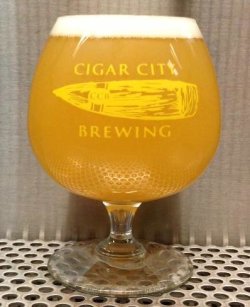We, the Average Joes at ACB, may not have full-time jobs brewing, selling, or judging beer, yet if you knew just how AWESOME some of our real jobs are, you’d better understand why we spend so much of our free time drinking beer. It all goes to show that we take our research quite seriously and wish to impart the wisdom we’ve stumbled upon, in the hopes of making your free time as rich as ours.
Without further ado, let’s drink in yet another chapter in our series, “What the Hell is a Berliner Weisse?”
The Basics:
As you may have already figured out, this Weissebier has something to do with Berlin. Duh. What you may not know about this unique sour-wheat dubbed “The Champagne of the North” is that it wasn’t actually first brewed in Berlin. The origination of the style is (surprise!) complicated. Some believe it was developed by a Hamburger (no, not a fast food cartoon character, but a guy from Hamburg) named Cord Broihan, who brewed the popular ‘Halberstädter Broihan’ that was later picked up by Berlin brewers such as Dr. J.S. Elsholz in the 1640s.
Others believe the style migrated with the persecuted Protestant Huguenots, who may have brought their beloved red and brown fruity sours with them from the Flanders region into Northern Germany. Still others say the style was already being brewed in Berlin a century earlier around 1572. Yet one thing is clear… everyone was drinking enough of the stuff to lose track of time and who the hell first brewed it, when, or where. What’s also curious about this Weisse is that it almost died a very long, slow death in the late 1900s, just as the Gose almost did, with only a few brewers in Berlin still brewing it. Luckily, it’s had a worldwide renaissance of late.
We also know that the Berliner Weisse or Berliner Weiße (auf Deutsch) is traditionally served with one of two syrups: either the Himbeere , a red raspberry flavoring, or the Waldmeister, a green woodruff flavor. The classic version has a tart, sour, and acidic profile yet is still refreshing, especially with the added syrup, which is often already blended in the US unless served at a legit establishment on tap. BWs in the US and Canada are referred to as a “Berliner Weiss(e)-Style,” especially by Berliners who take umbrage with us pesky Americans stealing their mojo (the name is “protected” in Germany). The Weissebier is often very low in ABV (generally 2.0% to 5.0%); has little if any hop presence; and varies in color based upon fruit, juice, or syrup added.
 The Beers:
The Beers:
Bear Republic Brewing, Tartare (Healdsburg, CA) – Considered by many to be the best of the style on our shores, it’s certainly gotten enough response for the brewers to return to the well, with Rouge and Peche varieties also available. Coming in at a higher ABV of 4% than many other varieties of the style, this is a can’t miss Berliner Weisse.
Prairie Artisan Ales, Prairie Weisse (Tulsa, OK) – While this has only been brewed once (that we know of), Prairie has only been in existence for a few years and based on the response to their small-yield, hugely flavored wild beers, they’re not going anywhere anytime soon. At a heftier 4.5% ABV, this one’s sure to refresh as well as give you some serious street cred with local beer nerds.
 Cigar City Brewing, Black Currant (Tampa, FL) – If anyone in America knows how to do a Berliner Weisse, it’s Cigar City who’s made at least 17 versions of the style. This one in particular, at 3% ABV, has craft heads drooling (especially since it was recently flowing at Stone Brewing’s 18th Anniversary celebration). If you can’t find this one, their ‘Session’ is on tap in Tampa at 1% ABV.
Cigar City Brewing, Black Currant (Tampa, FL) – If anyone in America knows how to do a Berliner Weisse, it’s Cigar City who’s made at least 17 versions of the style. This one in particular, at 3% ABV, has craft heads drooling (especially since it was recently flowing at Stone Brewing’s 18th Anniversary celebration). If you can’t find this one, their ‘Session’ is on tap in Tampa at 1% ABV.
Our Take:
For us, the Berliner Weisse style, once a diamond in a dense German rough, is a phenomenal alternative to any number of English-style session beers available today. Being that it fuses the Belgian, French, and German approaches to fermentation, we find it no surprise that it’s caught on so well with us mixed-breed Americans. The reason we really love this beer though is that it offers cooling refreshment in such a wide variety of sub flavors, making every Berliner Weisse a completely different adventure to the old country, every single time.
 American Craft Beer The Best Craft Beer, Breweries, Bars, Brewpubs, Beer Stores, And Restaurants Serving Serious Beer.
American Craft Beer The Best Craft Beer, Breweries, Bars, Brewpubs, Beer Stores, And Restaurants Serving Serious Beer.
